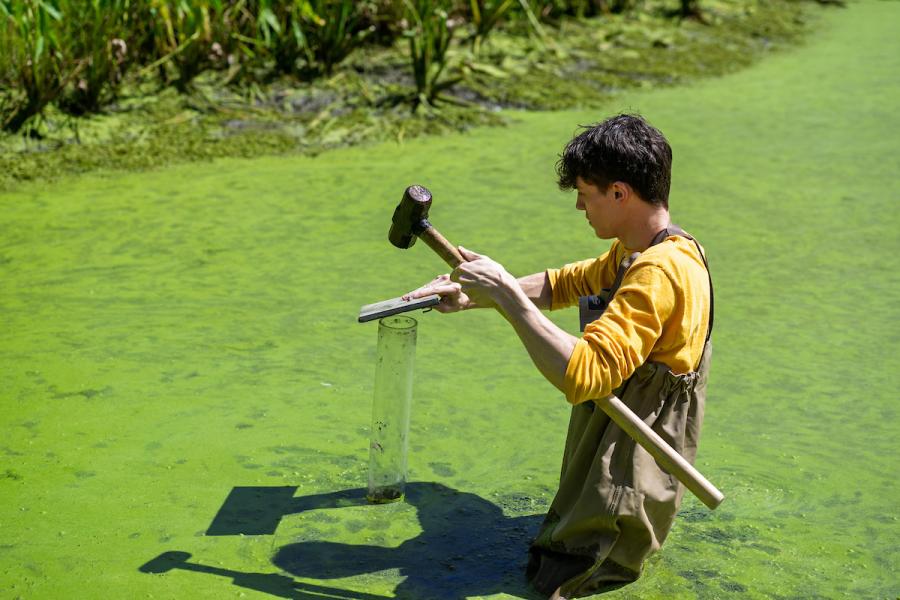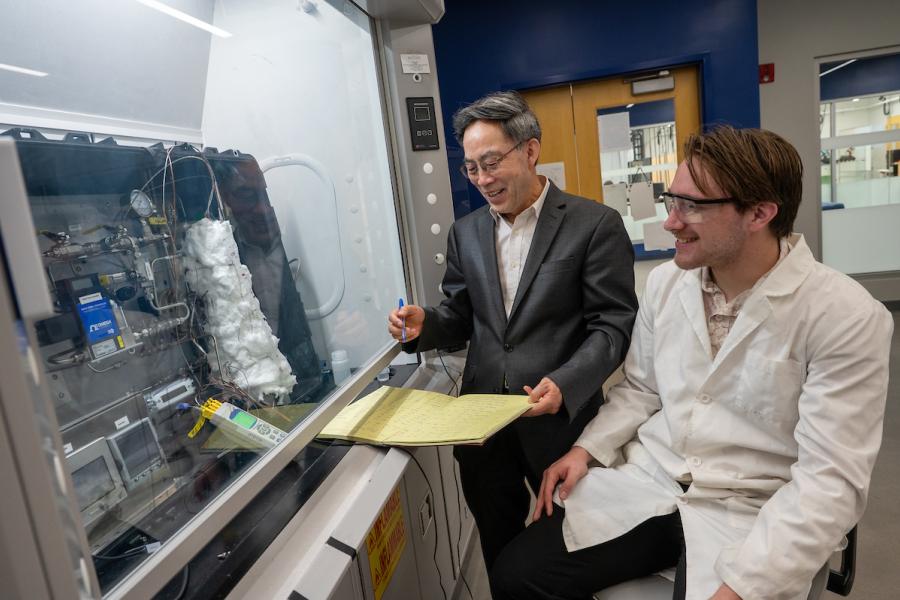Research and Science
Summer Undergraduate Research Experience Gives Students a Platform to Present Their Research
Students who won first - and second-place for the Summer Undergraduate Research Experience (SURE) were announced on Oct. 25 at a ceremony at the Kiva auditorium.

Kent State's Wetlands Are the Training Grounds for the Summer Undergraduate Research Experience
Senior Nick Brocato and sophomore Tamera Owens were among the 172 undergraduate Kent State students who participated in the Summer Undergraduate Research Experience (SURE) during the summer of 2025. They conducted research projects under the direction of Lauren Kinsman-Costello, Ph.D., associate professor in the Department of Biological Sciences at Kent State and members of her lab.

Summer Undergraduate Research Experience Prepares Students for Their Future Careers
The Summer Undergraduate Research Experience is a great opportunity for undergraduate researchers such as Ethan Wenk to work directly with a faculty mentor, gain valuable experience to clarify career and educational goals, enhance research skills and gain academic insight.

Healthy Communities Research Institute Tackles Today's Pressing Issues
The Healthy Communities Research Institute conducts interdisciplinary basic and applied research that will lead to the discovery of practices that “enable people to thrive free of preventable diseases and injury.”

Research, Scholarship and Creativity on Display at Undergraduate Symposium
More than 300 student presenters displayed their research and creativity on Friday, April 5, at the Undergraduate Symposium on Research, Scholarship and Creative Endeavors.

Carla Goar, Ph.D., Puts Sociology Expertise to Work as Director of Anti-Racism and Equity Institute
Carla Goar is director of the Anti-Racism and Equity Institute, which was established in the spring of 2021 and is one of many programs that the university has instituted to challenge racial inequality and advance equity for all
Dr. Oleg Lavrentovich and collaborators publish an article in Science on ferroelectric liquid crystals
Dr. Lavrentovich, professor of Physics at Kent State University, and collaborators publish an article in Science.

Dr. Oleg Lavrentovich and collaborators publish an article in Science on ferroelectric liquid crystals
Dr. Lavrentovich, professor of Physics at Kent State University, and collaborators publish an article in Science.

Dr. Zhangbu Xu joins the Kent State University Department of Physics faculty
The Kent State University Department of Physics is proud to welcome our newest faculty member, Dr. Zhangbu Xu.

Scientistas Train For the Ultimate Celestial Event: The Total Solar Eclipse
Scientistas Foundation members are helping the Research Center for Educational Technology host a pre-eclipse event for the community on April 3 and learning how to operate a grant-funded camera and telescope.